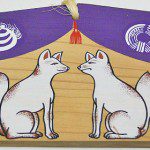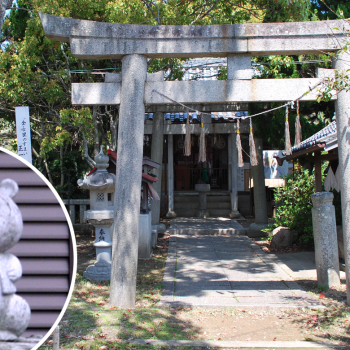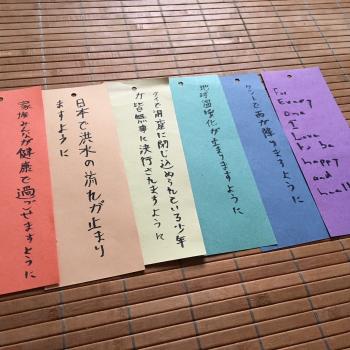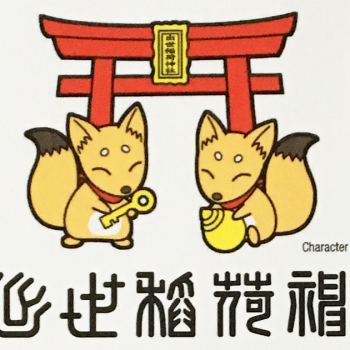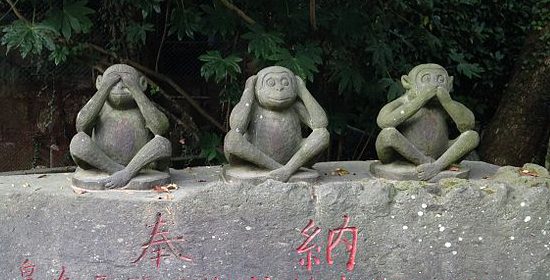
February 8 marks the beginning of the Chinese Year of the Monkey – specifically, the Red Fire Monkey. Japan also follows the tradition of a 12 yearly cycle of zodiac animals, but unlike China, it now uses the Gregorian calendar rather than the old lunar calendar so it has in fact been the Year of the Monkey in Japan since January 1 in Japan.
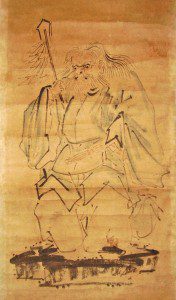
The monkey is a significant animal in Japan. Unlike some of the other animals in the Chinese zodiac, the monkey has been familiar to the Japanese since ancient times because macaques are native to the Japanese islands. Monkeys are common in Japanese folktales, in which they are portrayed as cunning, witty and mischievous. They are associated with the Shinto kami (deity) Sarutahiko Okami (猿田彦大神), whose name can be translated literally as “Great God Prince Monkey Field.” Sarutahiko symbolises the idea of misogi, or purification (a fundamental concept in Shinto), and is patron of martial arts.
But perhaps the most famous monkey icon in Japan is the san-zaru or san-en, often known as the Three Wise Monkeys in English. The Three Wise Monkeys have been present in Japanese iconography since the 17th century, and have links with Buddhism, Confucianism and Taoism. One monkey is depicted covering his eyes with his paws, the other his ears, and the third his mouth. In English, they are accompanied by the maxim, “See no evil, hear no evil, speak no evil.” But why is this? And what does this proverb mean?
To answer the first question, it’s helpful to understand the Japanese version of this proverb, which is “mizaru, kikazaru, iwazaru” (見ざる、聞かざる、言わざる). This literally means “Not seeing, not hearing, not speaking,” but there’s a bit of a pun involved. The suffix –zaru, which changes the verb into the negative, sounds like “saru,”(猿) which means “monkey.” That’s where this icon comes from – it is a literal, visual pun of monkeys that are not seeing, hearing or speaking!
But what “see no evil, hear no evil, speak no evil” actually refers to is a matter of debate. In the West it often has the negative interpretation of refusing to take moral responsibility by feigning ignorance of wrongdoing (similar to “turning a blind eye”). But originally it probably had a more positive meaning in Buddhism, referring to keeping one’s mind and actions pure by refusing to partake in any evil deeds – even seeing, hearing or speaking them. I link this back to the Shinto idea of misogi – of keeping one’s self close to the kami by avoiding impurity in thoughts and deeds. Perhaps that is another reason why the patron of purity, Sarutahiko, is so closely linked with monkeys.
If you haven’t already made a New Year’s Resolution, why not make one inspired by the monkey for Chinese New Year? On January 1st, I made the following prayers in order to commemorate the Year of the Monkey:
Like the monkey, may I have the wit to make wise decisions, and be full of energy to put my thoughts into action.
Like Sarutahiko Okami, may I be pure and disciplined in mind, and persevere to overcome all challenges.
May I keep my thoughts, words and actions free from that which is harmful.
May I never turn a blind eye to that which I believe is wrong, and always speak out for what I believe is right.
References and further reading
“Monkeys in Japanese Culture,” Wikipedia
“Three Wise Monkeys,” Wikipedia
Image credit:
By そらみみ (Own work) [CC BY-SA 4.0 (http://creativecommons.org/licenses/by-sa/4.0)], via Wikimedia Commons

